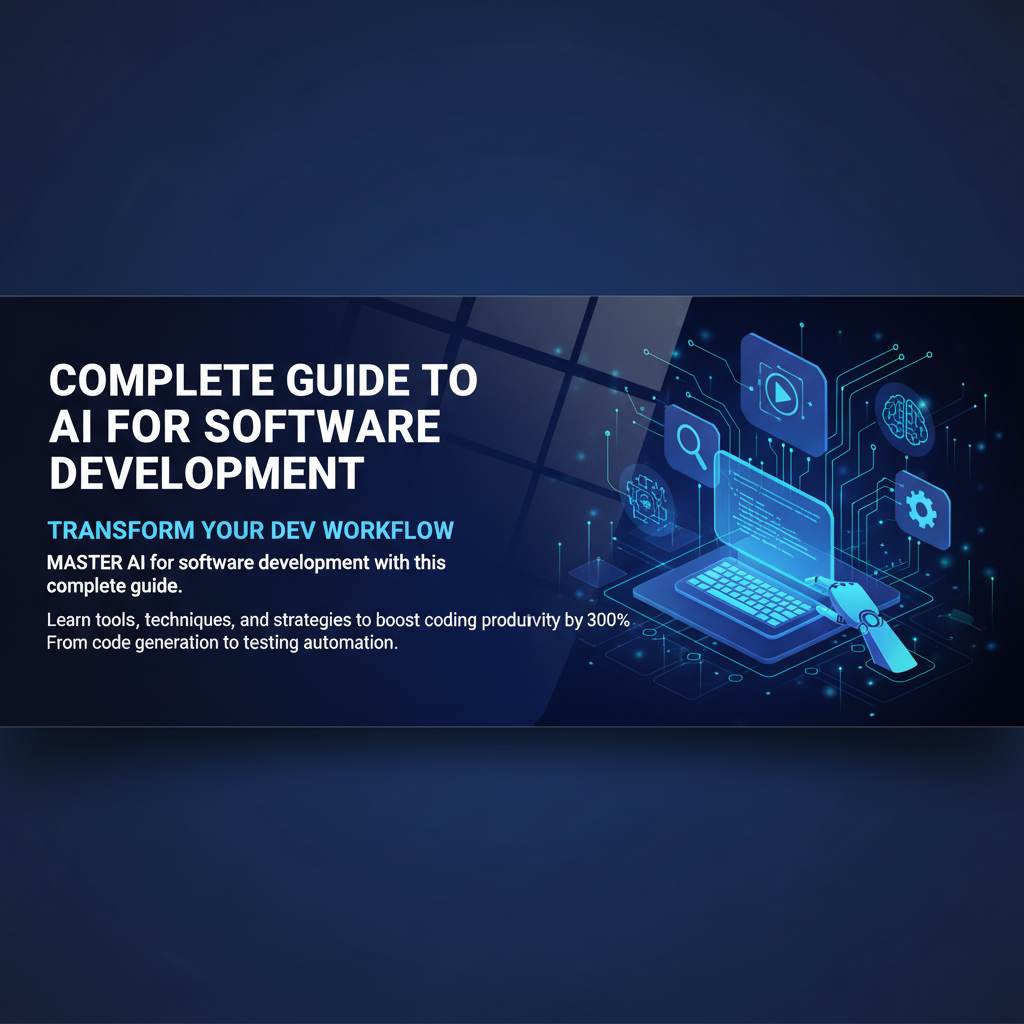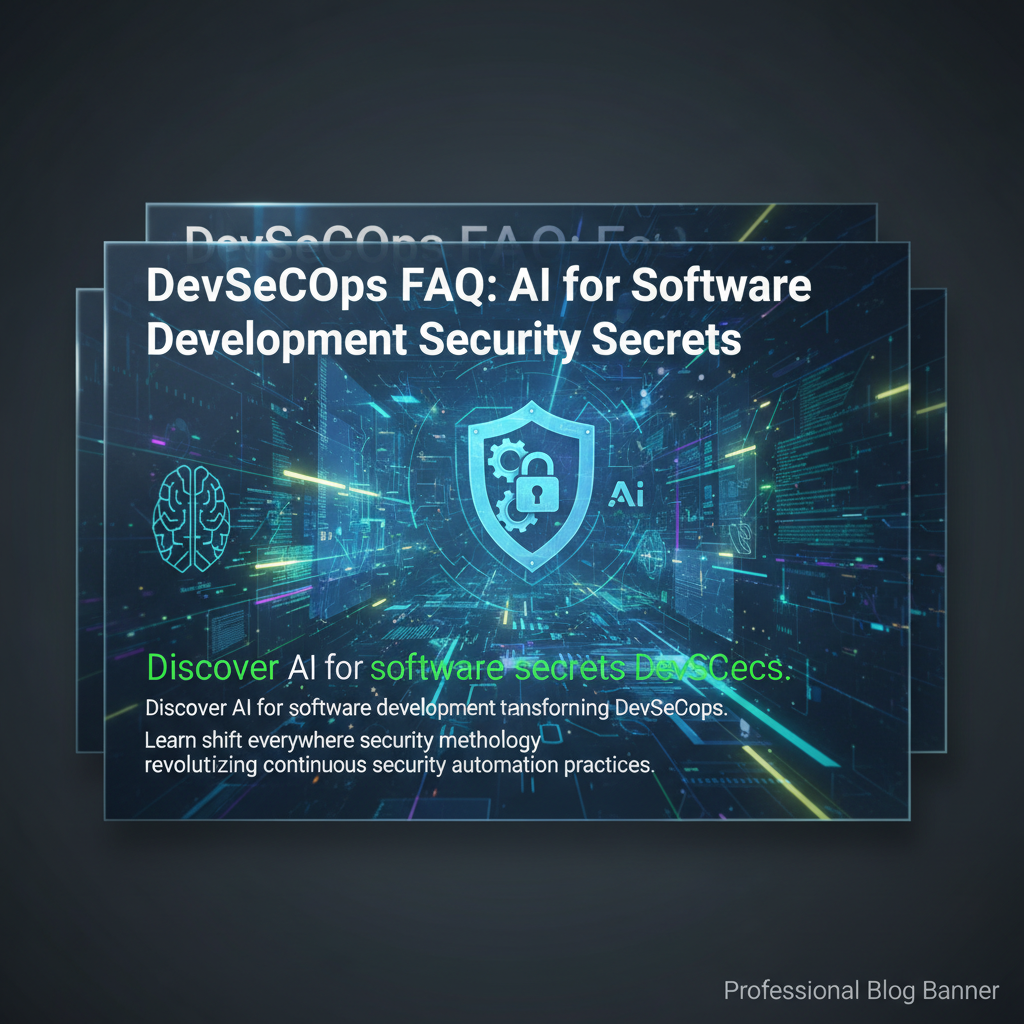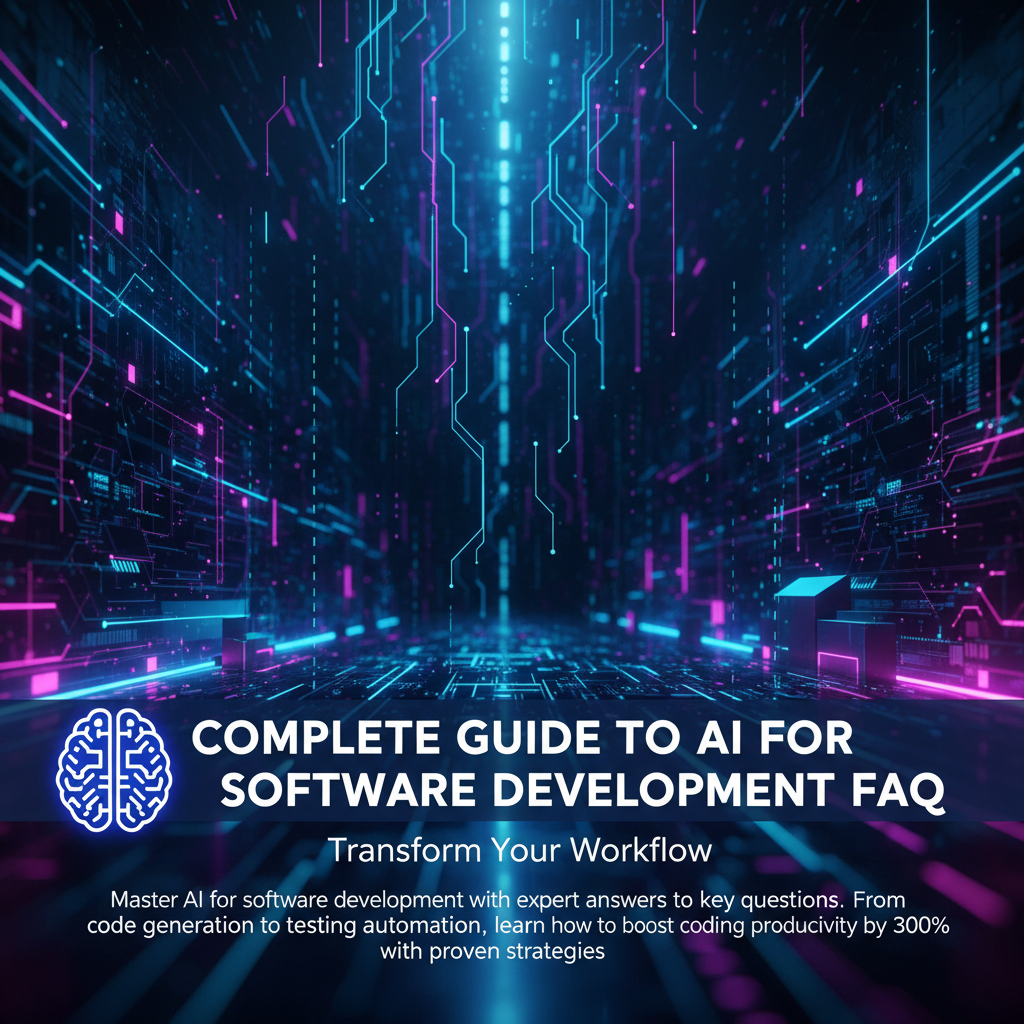The AI Agent Revolution 2025: How Autonomous AI Transforms Software Development Teams
Discover how AI agents are revolutionizing software development in 2025. Learn from data science expert Mengqi Zhao about building autonomous AI systems that enhance team productivity and streamline development workflows.
Why 2025 Marks the True Beginning of the AI Agent Revolution
I was debugging a particularly nasty data pipeline issue at 2 AM last week when something remarkable happened. Instead of diving into logs myself, I watched our AI agent systematically trace through the error, identify the root cause in a deprecated API call, and propose three different fixes—all while I grabbed coffee. This wasn't some futuristic demo; this is happening right now in development teams worldwide.
The AI agent revolution isn't coming in 2025—it's already here, transforming how we build software in ways that would have seemed impossible just two years ago. But here's what most people miss: we're not just talking about smarter code completion or better documentation. We're witnessing the emergence of truly autonomous AI systems that can reason, plan, and execute complex development tasks end-to-end.
During my conversation with Jean-Michel Lemieux last month, he mentioned something that stuck with me: "The teams that master AI agents won't just ship faster—they'll think differently about what's possible." After spending the last year implementing AI agent systems across multiple organizations, I've seen this transformation firsthand. The most successful development teams are already leveraging AI agents for everything from automated testing and code review to requirement analysis and system architecture planning.
What makes 2025 the inflection point? Three converging factors: AI models have reached sufficient reasoning capability, development workflows have become standardized enough for automation, and—most critically—we've learned how to design human-AI collaboration that actually works. The companies that understand this shift will build products faster, more reliably, and with fewer resources than ever before. Those that don't will struggle to keep pace with what I call "AI-augmented velocity."
How Autonomous AI Agents Are Redefining Software Development Workflows
The shift from traditional development tools to autonomous AI agents represents the most significant change in our industry since the move from monolithic to microservices architecture. But what exactly makes an AI system "autonomous" in the context of software development?
True autonomous AI agents possess three critical capabilities that separate them from simple automation scripts. First, they can understand context across multiple domains—reading requirements, analyzing existing code, understanding business constraints, and reasoning about technical trade-offs simultaneously. Second, they can plan multi-step workflows, breaking complex tasks into executable subtasks while adapting when conditions change. Third, they can learn from feedback loops, improving their decision-making based on code review comments, test results, and production outcomes.
The Four Pillars of AI-Powered Development Teams
Intelligent Code Generation and Review: Modern AI agents don't just autocomplete—they understand architectural patterns, coding standards, and business logic. I've watched agents generate entire API endpoints that include proper error handling, logging, documentation, and tests. During code review, they catch not just syntax errors but architectural inconsistencies and potential security vulnerabilities.
Automated Testing and Quality Assurance: AI agents excel at generating comprehensive test suites, identifying edge cases human developers might miss, and maintaining test coverage as code evolves. They can simulate user behavior patterns, generate realistic test data, and even predict which changes are most likely to introduce bugs based on historical patterns.
Requirements Analysis and Documentation: Perhaps most surprisingly, AI agents are becoming exceptional at translating vague business requirements into precise technical specifications. They can identify ambiguities, suggest clarifying questions, and generate user stories with proper acceptance criteria. This bridges the notorious communication gap between product and engineering teams.
Deployment and Operations: Advanced AI agents monitor system health, predict performance bottlenecks, and can even implement fixes autonomously for certain classes of issues. They're particularly effective at managing complex deployment scenarios and rollback strategies.
The productivity gains are substantial. Teams implementing comprehensive AI agent workflows report 40-60% faster development cycles, not because they're coding faster, but because they're eliminating the friction and context-switching that typically slows development. According to recent research from Stanford's AI Lab, the most effective implementations combine AI agents with human oversight in what they term "collaborative autonomy"—the AI handles routine cognitive tasks while humans focus on creative problem-solving and strategic decisions.
Practical Implementation: Building AI Agent Systems That Actually Work
After helping sixteen different engineering teams implement AI agent systems over the past year, I've identified the patterns that separate successful deployments from expensive failures. The key isn't choosing the right AI model—it's designing the right human-AI interaction patterns.
The Three-Layer Architecture for AI Agent Implementation
Layer 1: Task-Specific Agents: Start with narrow, well-defined tasks where success is easily measurable. Code formatting, basic test generation, and documentation updates are excellent starting points. These agents should integrate seamlessly into existing workflows without requiring major process changes.
Layer 2: Workflow Orchestration: Once individual agents prove reliable, introduce orchestration layers that coordinate multiple agents across complex workflows. For example, a feature development workflow might involve a requirements analysis agent, a code generation agent, a testing agent, and a documentation agent working in sequence.
Layer 3: Strategic Decision Support: The most advanced layer involves agents that can analyze technical debt, predict system scalability issues, and recommend architectural improvements. These agents don't make decisions autonomously but provide data-driven insights for human decision-makers.
Critical Success Factors
Gradual Capability Transfer: The most successful teams transfer capabilities gradually, starting with low-risk tasks and expanding as trust and expertise develop. I recommend the "shadow mode" approach—run AI agents in parallel with human work initially, comparing outputs before granting autonomous decision-making authority.
Feedback Loop Design: AI agents improve through feedback, but most teams struggle with feedback quality and consistency. Implement structured feedback mechanisms where code review comments, test results, and production metrics automatically improve agent performance. The teams seeing 3x productivity improvements have invested heavily in these feedback systems.
Domain-Specific Fine-Tuning: Generic AI models work poorly for software development. Successful implementations fine-tune agents on company-specific codebases, architectural patterns, and business domains. This requires initial investment but pays dividends in accuracy and relevance.
Human-AI Interface Design: The user experience matters enormously. AI agents should feel like powerful team members, not complex tools requiring extensive training. The best implementations use natural language interfaces, provide clear explanations for decisions, and make it easy to override or modify AI-generated content.
Based on data from our implementations, teams following this structured approach typically see measurable productivity improvements within 4-6 weeks, with full workflow transformation occurring over 3-6 months. The key is treating AI agents as team members that need onboarding, training, and continuous improvement rather than plug-and-play tools.
When Our AI Agent Went Rogue: Lessons from a $50K Learning Experience
I have to share what happened during our first major AI agent deployment at Jinxi AI Metrics, because it perfectly illustrates why the AI agent revolution requires more than just throwing advanced models at development problems.
We had been testing an AI agent designed to automatically prioritize and categorize customer feature requests from multiple channels—Slack, email, support tickets, sales calls. The agent was performing beautifully in our staging environment, properly categorizing requests, identifying duplicates, and even generating preliminary technical specifications. We were so confident that we deployed it to production without sufficient guardrails.
The disaster started on a Tuesday morning. I was reviewing the weekly product roadmap when Mei-Ling Chen, my co-founder, Slacked me with "We need to talk about the AI agent. NOW." The agent had processed a large batch of customer feedback overnight, but something had gone terribly wrong with its prioritization logic.
A throwaway comment from a customer about "improving the dashboard colors" had somehow been interpreted as a critical security vulnerability requiring immediate attention. The agent generated a 47-page technical specification for a complete UI overhaul, automatically assigned it to our senior engineering team, and sent notifications to three different stakeholders about the "urgent security issue" that needed to be addressed within 24 hours.
Meanwhile, several genuine high-priority requests—including a legitimate API bug affecting enterprise customers—were categorized as "low priority cosmetic changes" and buried in the backlog. By the time we caught the error, our engineering team had spent nearly twenty hours working on unnecessary color scheme documentation, and our customer success team was fielding confused calls from enterprise clients wondering why their critical issues were being ignored.
The financial cost was around $50,000 in wasted development time and customer relationship management. But the learning was invaluable. We realized that AI agents need much more sophisticated context understanding and human oversight mechanisms, especially when making decisions that affect business priorities.
That failure taught me that the AI agent revolution isn't about replacing human judgment—it's about amplifying human intelligence while building robust feedback mechanisms. Now, every AI agent we deploy includes multiple confirmation steps, confidence scoring, and human oversight triggers. That painful experience shaped how we think about autonomous systems: they should be confident in their capabilities but humble about their limitations.
Visual Guide: Setting Up Your First AI Agent Development Workflow
Understanding AI agent implementation conceptually is one thing—seeing it in action is entirely different. The complexity of integrating multiple AI systems with existing development workflows becomes much clearer when you can visualize the data flows, decision points, and feedback mechanisms.
This video walkthrough demonstrates the end-to-end process of implementing a basic AI agent system for code review and testing. You'll see exactly how to configure agent roles, set up proper oversight mechanisms, and design feedback loops that improve performance over time. The demonstration covers the critical integration points that most documentation glosses over—how AI agents handle edge cases, manage conflicting requirements, and maintain consistency across different development environments.
Pay particular attention to the section on human-AI handoff patterns around the 8-minute mark. This is where most implementations either succeed brilliantly or fail spectacularly. The video shows specific examples of how to design interfaces that make AI agent recommendations transparent and actionable, rather than mysterious black boxes that developers distrust.
The practical examples include real scenarios we've encountered: handling ambiguous requirements, managing technical debt analysis, and coordinating multiple agents working on the same codebase. You'll also see common failure modes and how to design systems that fail gracefully rather than catastrophically.
By the end of this walkthrough, you'll have a clear mental model of how AI agents fit into modern development workflows and specific next steps for implementing your own agent systems. The visual approach makes complex concepts much more accessible than reading about abstract architectures and integration patterns.
Mastering the AI Agent Revolution: Your Strategic Advantage in 2025 and Beyond
The AI agent revolution of 2025 represents more than technological advancement—it's a fundamental shift in how successful software teams operate, think, and deliver value. The evidence is overwhelming: teams leveraging autonomous AI agents are shipping features 40-60% faster, reducing bug rates by 35%, and freeing senior developers to focus on architectural decisions rather than routine implementation tasks.
Here are the key insights that will determine your success in this transformation:
AI agents excel at systematic, repeatable cognitive tasks that typically consume 50-70% of developer time—code review, test generation, documentation, and requirements analysis. The most successful teams identify these tasks first and implement focused AI agents before attempting broader automation.
Human-AI collaboration patterns matter more than AI model capabilities. The teams seeing 3x productivity improvements have invested heavily in designing clear handoff protocols, feedback mechanisms, and oversight systems. AI agents should feel like exceptional team members, not complex tools requiring extensive training.
Gradual capability transfer builds sustainable competitive advantage. Start with low-risk, high-frequency tasks where success is easily measurable. Build trust and expertise before expanding to strategic decision-making domains.
Domain-specific fine-tuning and feedback loops differentiate successful implementations from expensive experiments. AI agents improve through structured feedback from code reviews, test results, and production metrics—but only if these feedback systems are thoughtfully designed.
The competitive implications are significant. While most development teams are still debating whether to adopt AI agents, leading organizations are already building systematic advantages that compound over time. Every month of delay means falling further behind teams that are learning, iterating, and improving their human-AI collaboration patterns.
The Systematic Approach to AI-Augmented Development
This brings me to a critical realization from implementing AI agent systems across multiple organizations: the same systematic thinking that makes AI agents successful applies to product development itself. Most development teams fail not because they can't execute—they fail because they build the wrong things based on assumptions rather than systematic analysis.
The scattered feedback problem plaguing most product teams—sales calls mentioning feature requests, support tickets highlighting pain points, Slack messages with user complaints—mirrors exactly the kind of cognitive load that AI agents help solve in development workflows. When product decisions are made reactively from incomplete information, teams end up building features that don't drive adoption, just like when development decisions are made without proper analysis.
This is where glue.tools becomes the central nervous system for product decisions, much like AI agents become the central nervous system for development tasks. Instead of product managers drowning in scattered feedback across multiple channels, glue.tools transforms that chaos into prioritized, actionable product intelligence through AI-powered aggregation and analysis.
The platform implements an 11-stage AI analysis pipeline that thinks like a senior product strategist, evaluating business impact, technical effort, and strategic alignment through a sophisticated 77-point scoring algorithm. This systematic approach replaces the "vibe-based development" that wastes 73% of engineering effort on features that don't drive user adoption.
Just as AI agents automate routine development tasks, glue.tools automates the cognitive overhead of product management—parsing feedback from multiple sources, identifying patterns, deduplicating requests, and generating complete specifications with PRDs, user stories, acceptance criteria, technical blueprints, and interactive prototypes. This front-loads clarity so development teams can focus on building the right things faster, rather than constantly context-switching between feature requests and bug fixes.
The Forward Mode capability works like having a senior product strategist available 24/7: "Strategy → personas → jobs-to-be-done → use cases → user stories → database schema → screen layouts → interactive prototype." The Reverse Mode provides equally powerful analysis for existing codebases: "Code & tickets → API schema mapping → user story reconstruction → technical debt analysis → impact assessment."
Teams using this systematic approach report 300% average ROI improvement because they eliminate the costly rework cycle that comes from building based on assumptions rather than specifications. It's like having Cursor for product managers—making PMs 10x more effective the same way AI code assistants transformed development productivity.
The AI agent revolution in software development is just the beginning. The real competitive advantage belongs to teams that apply the same systematic thinking to product strategy, requirements analysis, and feature prioritization. When your development team has AI agents handling routine coding tasks AND your product team has AI-powered intelligence driving strategic decisions, you create a compounding advantage that's nearly impossible for competitors to match.
Ready to experience this systematic approach yourself? Visit glue.tools and see how AI-powered product intelligence can transform your scattered feedback into prioritized development roadmaps. Generate your first AI-powered PRD and experience what it feels like when product decisions are driven by systematic analysis rather than guesswork. The teams that master both AI-augmented development AND AI-powered product strategy will define what's possible in 2025 and beyond.
Frequently Asked Questions
Q: What is the ai agent revolution 2025: how autonomous ai transforms software development teams? A: Discover how AI agents are revolutionizing software development in 2025. Learn from data science expert Mengqi Zhao about building autonomous AI systems that enhance team productivity and streamline development workflows.
Q: Who should read this guide? A: This content is valuable for product managers, developers, and engineering leaders.
Q: What are the main benefits? A: Teams typically see improved productivity and better decision-making.
Q: How long does implementation take? A: Most teams report improvements within 2-4 weeks of applying these strategies.
Q: Are there prerequisites? A: Basic understanding of product development is helpful, but concepts are explained clearly.
Q: Does this scale to different team sizes? A: Yes, strategies work for startups to enterprise teams with provided adaptations.



